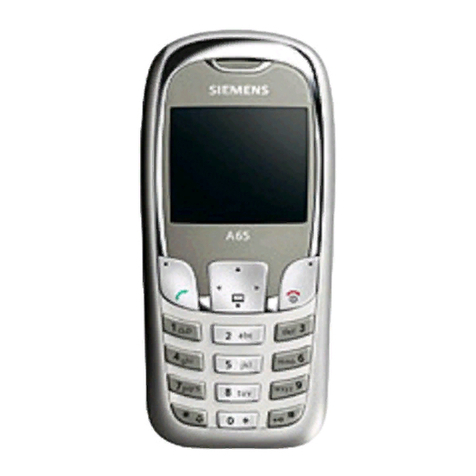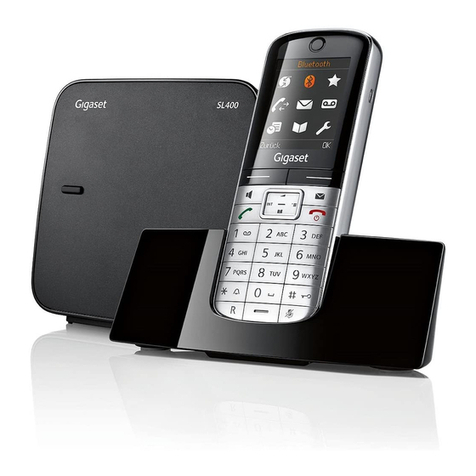Siemens S6 User manual
Other Siemens Cell Phone manuals
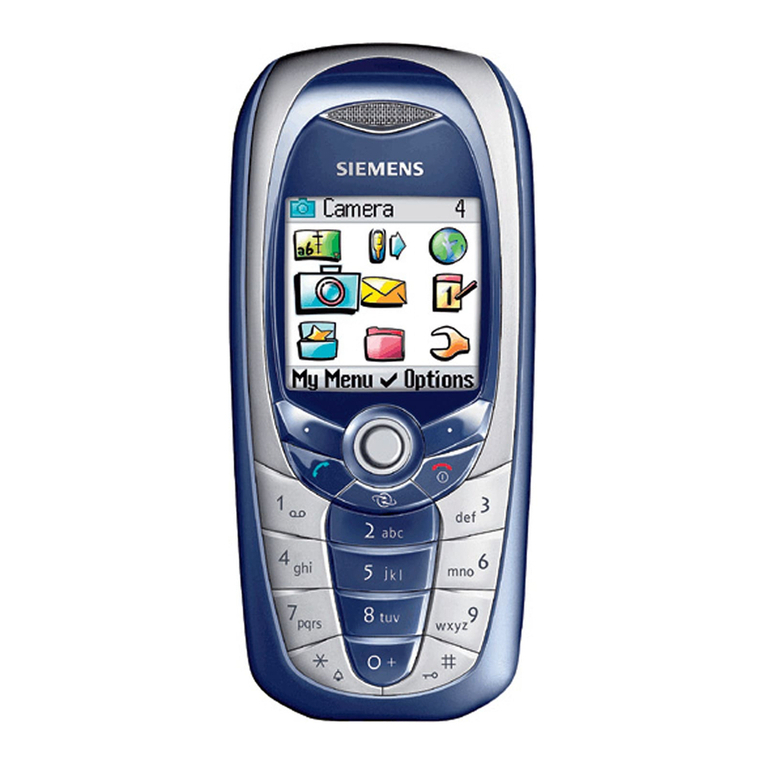
Siemens
Siemens C65 User manual
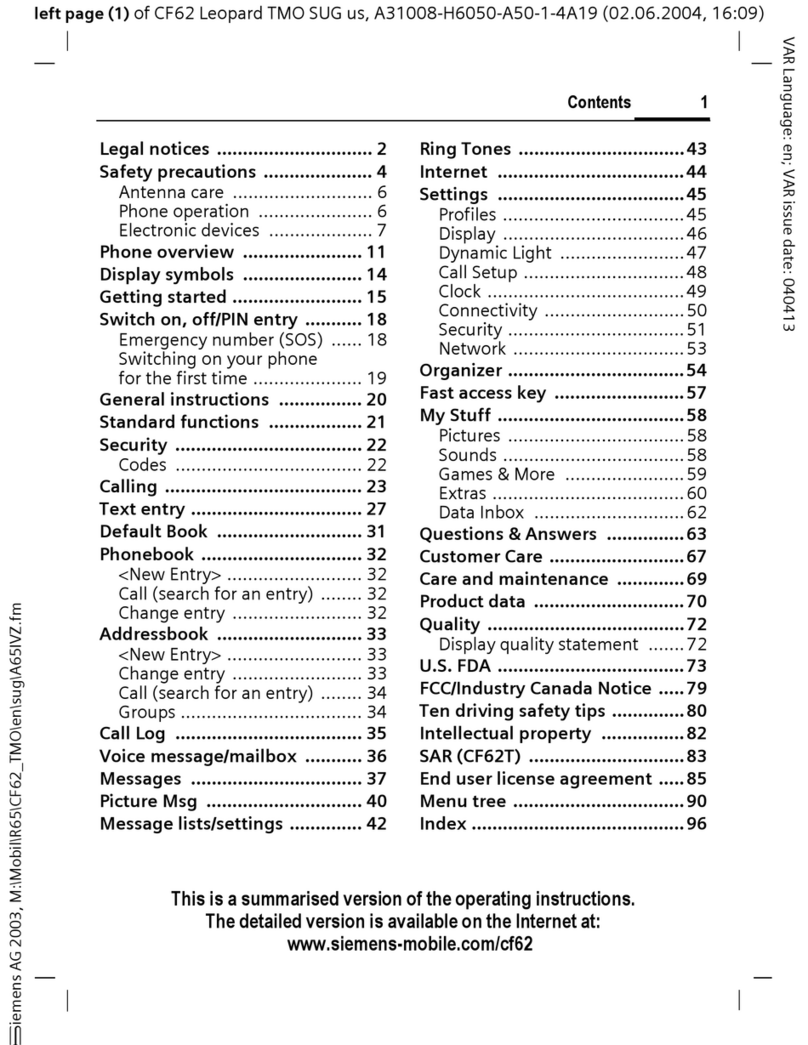
Siemens
Siemens Mobile User manual
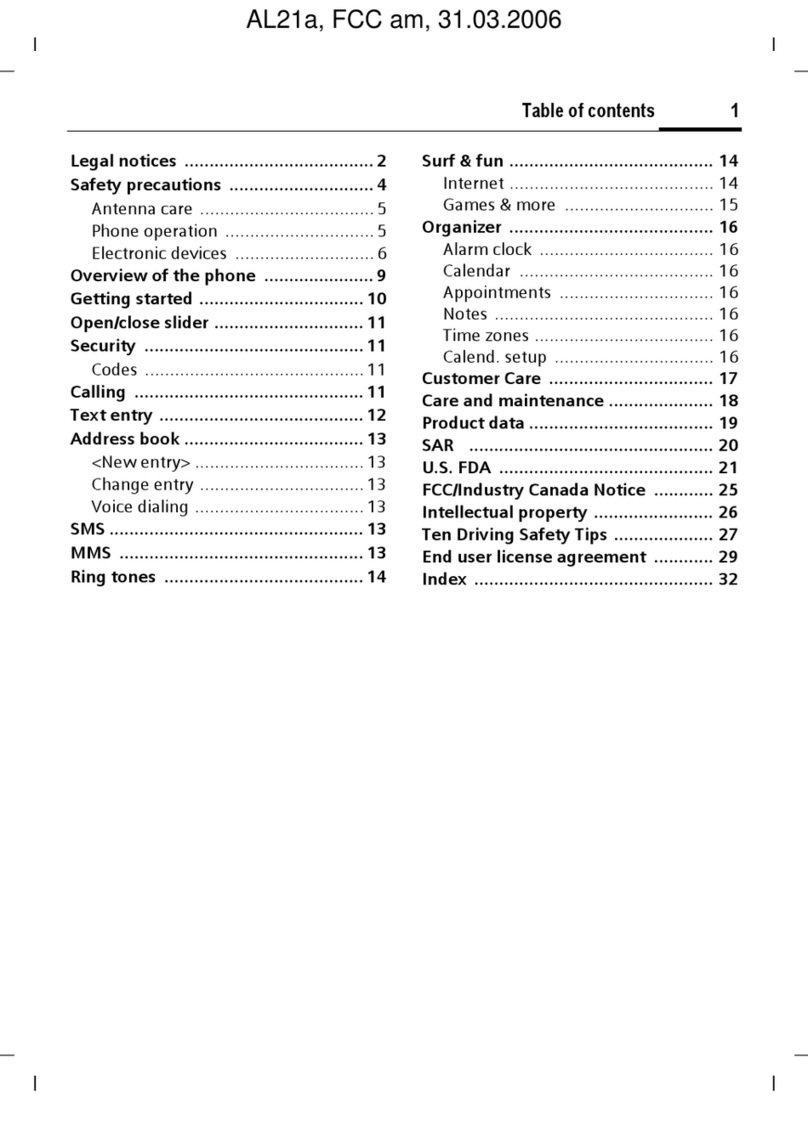
Siemens
Siemens AL21A User manual
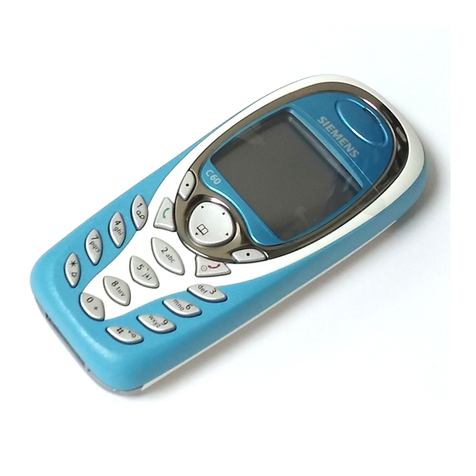
Siemens
Siemens C60 User manual
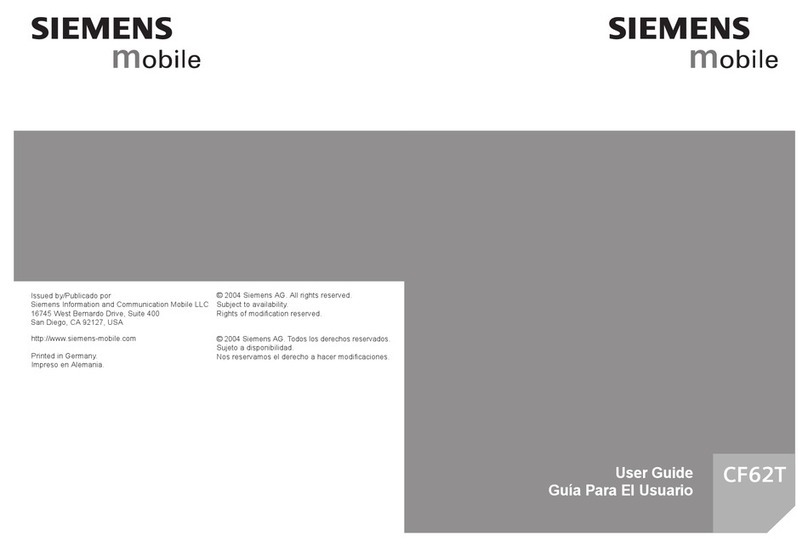
Siemens
Siemens Mobile CF62T User manual
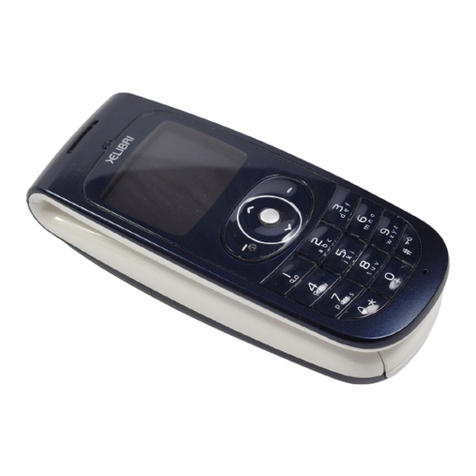
Siemens
Siemens Xelibri User manual
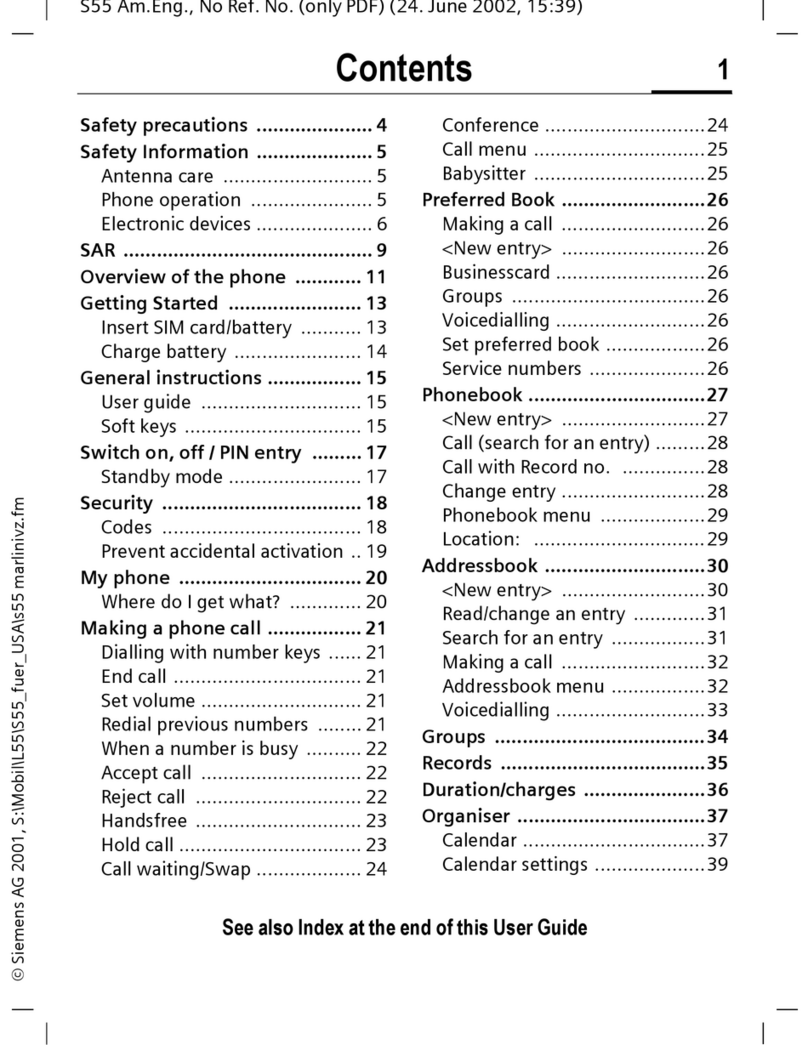
Siemens
Siemens S55 User manual
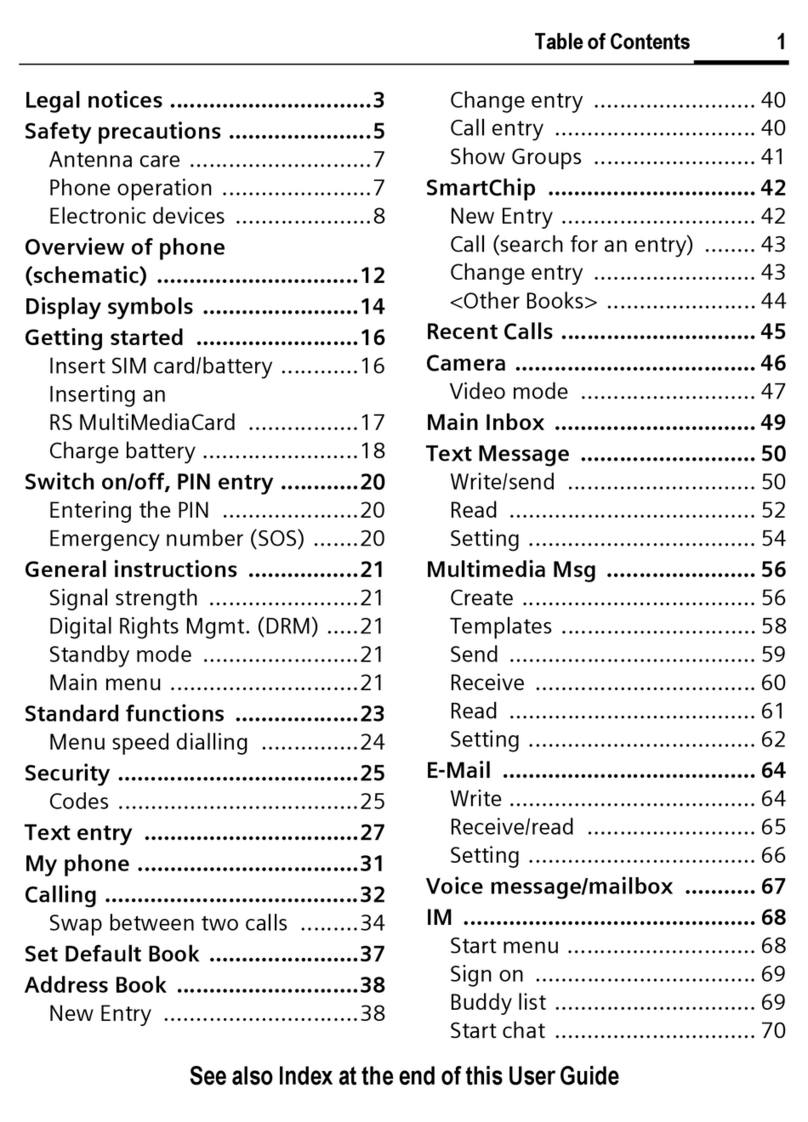
Siemens
Siemens S66 User manual
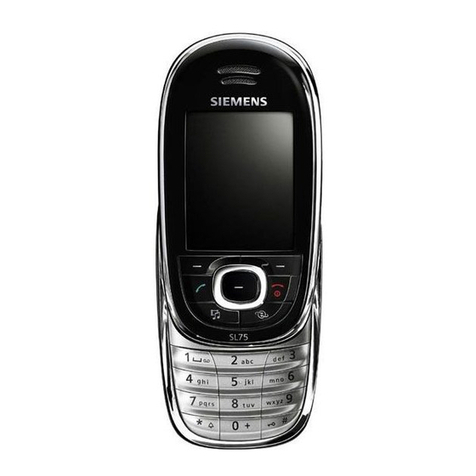
Siemens
Siemens Gigaset SL75 WLAN User manual
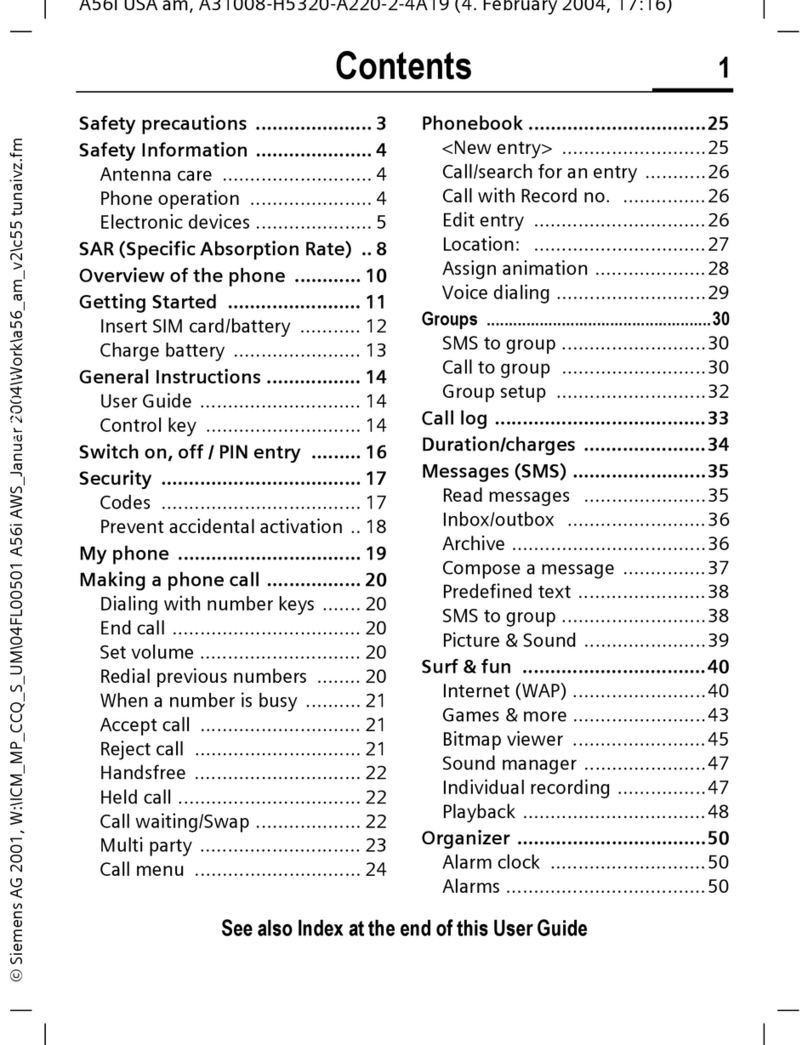
Siemens
Siemens A56i User manual
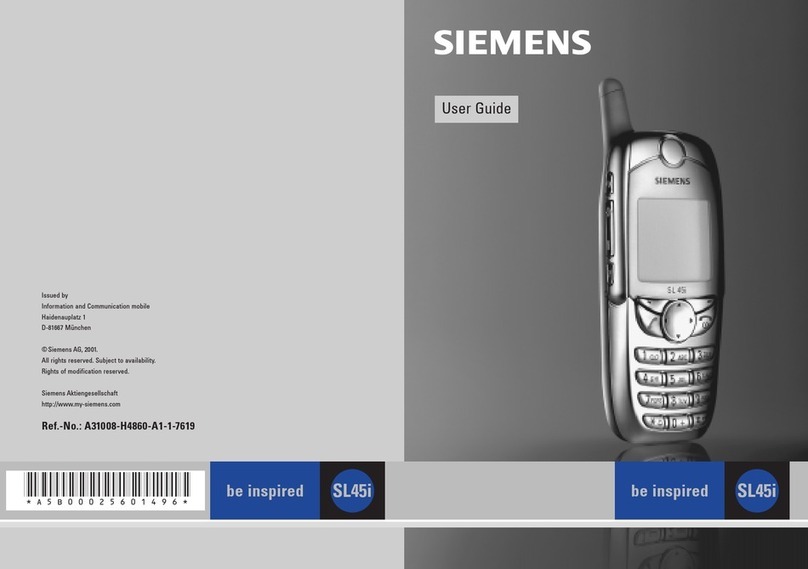
Siemens
Siemens SL45i User manual

Siemens
Siemens SX1 User manual
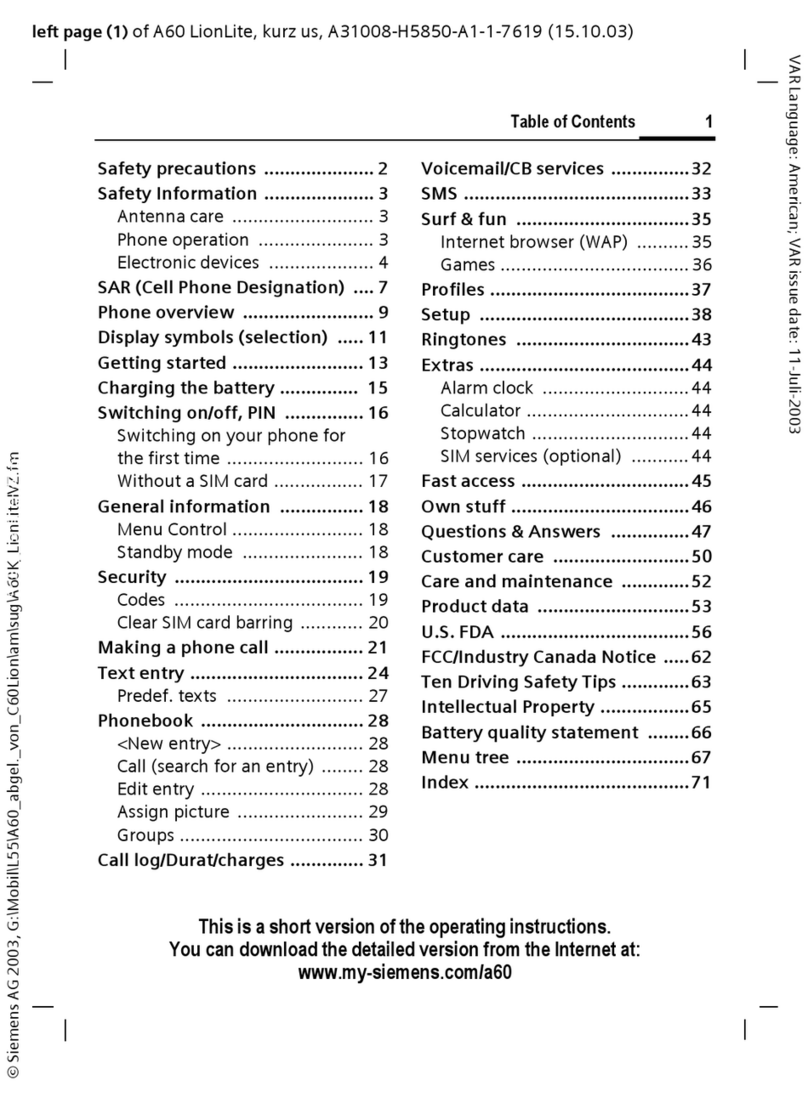
Siemens
Siemens SOMATOM Sensation Cardiac Version A60 User manual
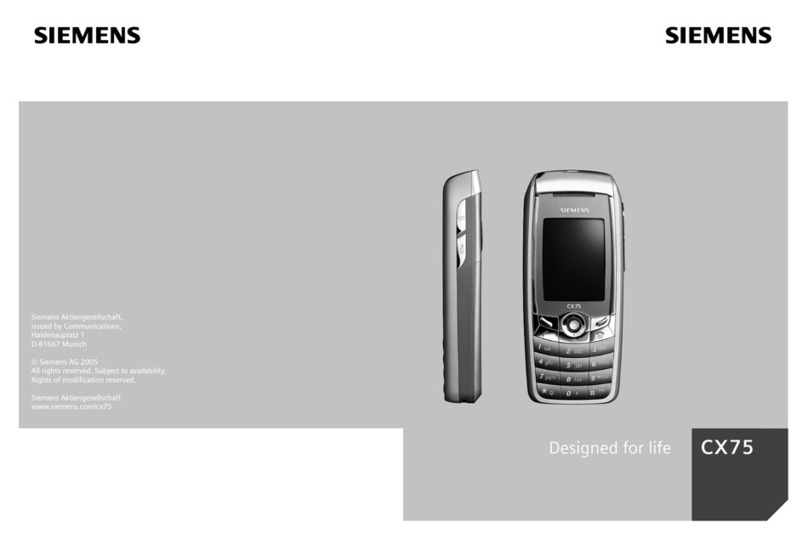
Siemens
Siemens CX75 User manual
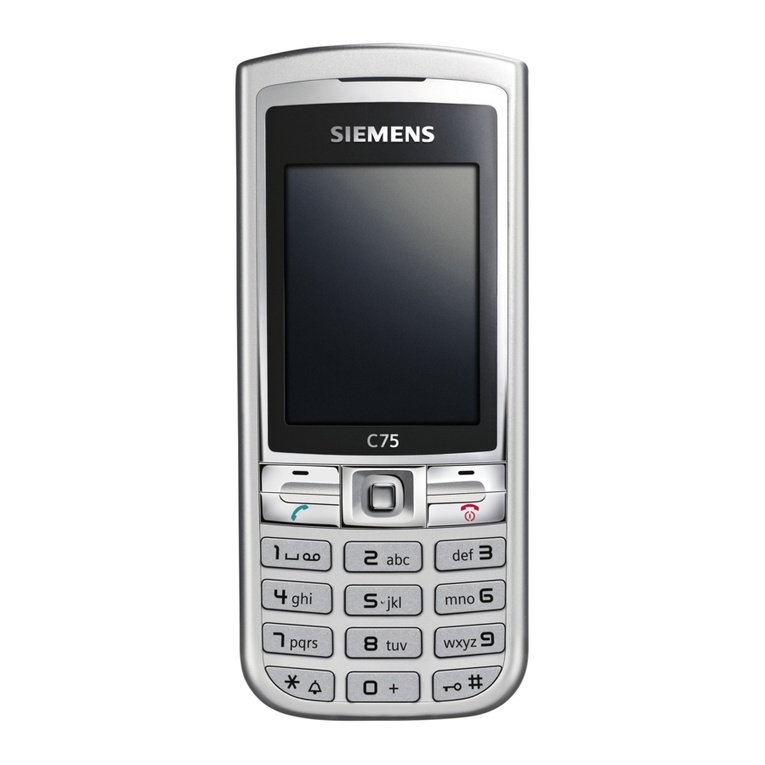
Siemens
Siemens C75 User manual

Siemens
Siemens C65 User manual
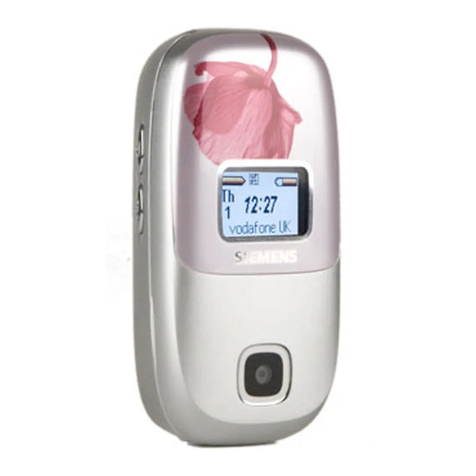
Siemens
Siemens CL75 User manual

Siemens
Siemens S2588 User manual

Siemens
Siemens AF51 User manual
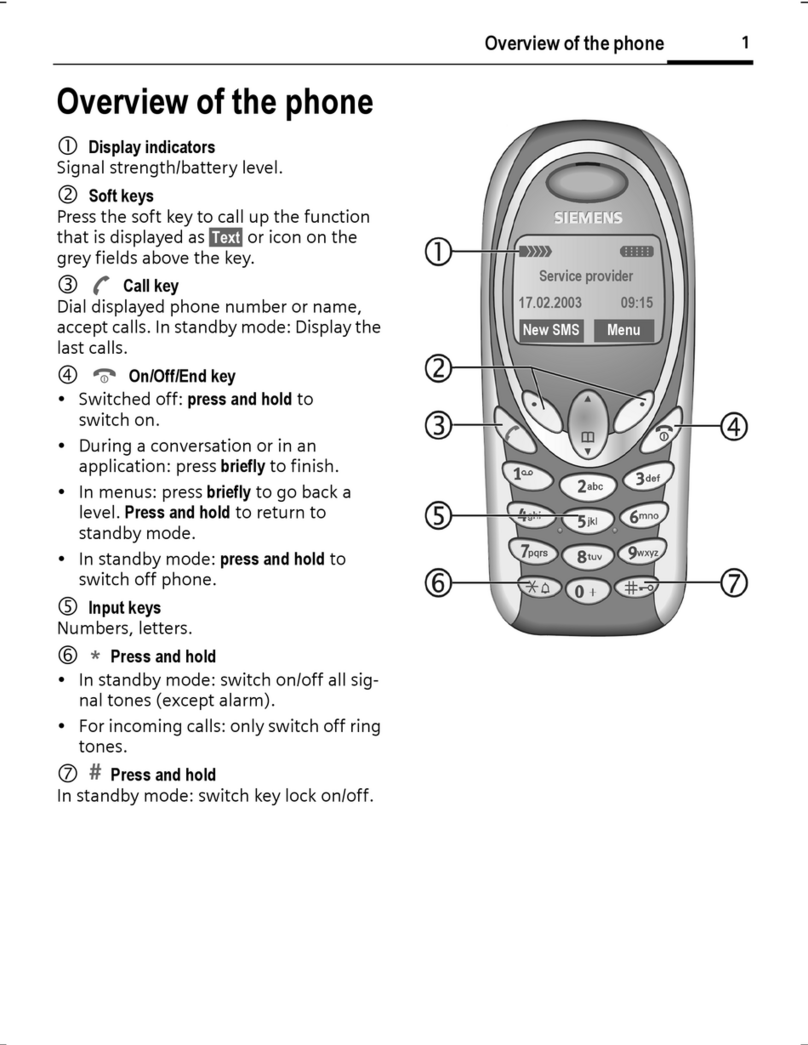
Siemens
Siemens A51 User manual
